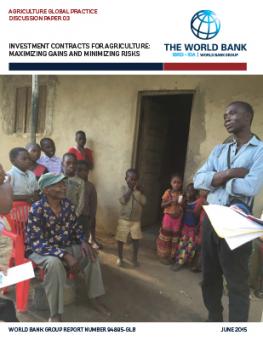
Investment Contracts for Agriculture: Maximizing gains and minimizing risks
This joint IISD, World Bank and UNCTAD discussion paper marries two substantial bodies of research to show how investment contracts can be set up to promote sustainable development. It presents the top five positive outcomes and the five downsides from private sector investments in large-scale agricultural projects.
This joint IISD, World Bank and UNCTAD discussion paper marries two substantial bodies of research to show how investment contracts can be set up to promote sustainable development.
It presents the top five positive outcomes and the five downsides from private sector investments in large-scale agricultural projects. The paper also proposes legal options to maximizing the main positive outcomes and minimizing the main downsides through better drafting of contracts between investors and governments for the lease of farmland.
This paper has been posted with the permission of the World Bank.
You might also be interested in
WTO Agriculture Negotiations at MC13: What does the lack of outcomes mean for least developed countries and other vulnerable economies?
IISD expert Facundo Calvo analyzes what came out of the WTO's agriculture negotiations at the 13th Ministerial Conference in Abu Dhabi and its implications for least developed countries and other vulnerable economies.
Global Market Report: Soybean prices and sustainability
Less than 3% of soybeans are produced in compliance with sustainability standards. This report unpacks what needs to change to make soybeans a food that protects rather than harms the natural environment.
At WTO meet, India will have to balance between protecting local fishers and fishing sector growth
India is likely to advocate for securing the interests of its artisanal fishers while facilitating the growth of the fishing sector at the World Trade Organisation’s 13th Ministerial Conference (MC13) in Abu Dhabi later this month.
National State of the Environment Report: Uzbekistan
The National State of the Environment Report (NSoER) is a comprehensive document that provides a snapshot of current environmental trends in Uzbekistan's socio-economic development for citizens, experts, and policy-makers in the country of Uzbekistan.